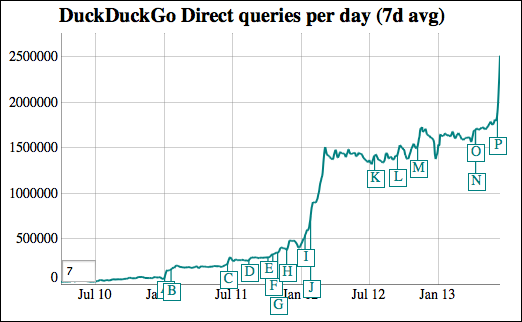
Most of us are pretty familiar with the fact that 'Content is King', however that doesn't mean that if you write and publish thousands of articles online that you'll automatically start boosting leads and sales.
So then, how do you get content to drive traffic and boost your sales? We've talked with Brett who works at Iconic Mind, an IT consulting firm that helps businesses not only with leveraging technology for maximum efficienty, but also helps with the business side of things and helping companies maximize profit. Here are a few strategies that can help you with your content marketing efforts.
Customize your pitch
Who wouldn't like a product tailored specifically for us? Wouldn't you prefer to buy or sign up for something that's personalized just for you, as opposed to a generic item?
One way a business can do this is to in fact create a unique product or service for each of their customers. However, for most businesses, that isn't really an option. What can be done though is to customize your sales pitch by putting in unique information targeted towards each of your visitors.
Personalize
Speaking of customizing your pitch; personalized notes have been shown to improve response by as much as 39%. So the next time you send off a mass email from that list that you've accumulated, make sure to personalize it with the person's name and any other pertinent information if you want to help improve your click-through-rates.
Easy Navigation
The people visiting your website should be able to easily find what they are looking for, and this begins with an easy to use menu and a clean website interface. The less time people spend clicking through to find what they're looking for, the less frustrated they'll be, and the more sales you'll be able to make. Since the majority of people are used to reading from top to bottom, left to right, your feature tabs for main landing pages should be in a horizontal navigation with sub menus or categories listed below.
Keyword Research
Do some research using Google Trends and Trends Map to see what topics are trending on Google and Twitter as well as Google's Keyword Research Tool and SEMRush to get an idea of what keywords people who would be interested in your material are searching for. Make a list of keywords that are most relevant out of the list you've come up with. It's also important to think about a user's intent. For example, someone searching for 'consultant' might be looking to get into a career of consulting, looking to hire a consultant, or just want more information on what a consultant is. On the other hand, someone searching for 'hire a consultant' is someone who is most likely looking to hire. In addition, you'll want to think about how competitive the keywords are - the more competitive the keyword, the more difficult it will be to rank your material and be found on the first page of Google.
Reduce Your Options
You'll need to look at your marketing metrics to see which items resonate best among your audience, however fewer options have typically proven to be better in product marketing. The Paradox of Choice reveals that people who are presented with too many choices become paralyzed by all the options available to them and are unable to make a decision. In the book that the phenomenon draws its name from, author Barry Schwartz reveals that having too many choices is a problem for us because of indecision and buyer’s remorse. To put it in basic terms, the more choices available to people, the more they worry about regrets in regards to their decision, before they've even made it, so keep it simple.
Have you tried any of the above methods to help with your content marketing strategy? Have they worked for you? How have you improved the persuasiveness of your content marketing strategy?
So then, how do you get content to drive traffic and boost your sales? We've talked with Brett who works at Iconic Mind, an IT consulting firm that helps businesses not only with leveraging technology for maximum efficienty, but also helps with the business side of things and helping companies maximize profit. Here are a few strategies that can help you with your content marketing efforts.
Customize your pitch
Who wouldn't like a product tailored specifically for us? Wouldn't you prefer to buy or sign up for something that's personalized just for you, as opposed to a generic item?
One way a business can do this is to in fact create a unique product or service for each of their customers. However, for most businesses, that isn't really an option. What can be done though is to customize your sales pitch by putting in unique information targeted towards each of your visitors.
Personalize
Speaking of customizing your pitch; personalized notes have been shown to improve response by as much as 39%. So the next time you send off a mass email from that list that you've accumulated, make sure to personalize it with the person's name and any other pertinent information if you want to help improve your click-through-rates.
Easy Navigation
The people visiting your website should be able to easily find what they are looking for, and this begins with an easy to use menu and a clean website interface. The less time people spend clicking through to find what they're looking for, the less frustrated they'll be, and the more sales you'll be able to make. Since the majority of people are used to reading from top to bottom, left to right, your feature tabs for main landing pages should be in a horizontal navigation with sub menus or categories listed below.
Keyword Research
Do some research using Google Trends and Trends Map to see what topics are trending on Google and Twitter as well as Google's Keyword Research Tool and SEMRush to get an idea of what keywords people who would be interested in your material are searching for. Make a list of keywords that are most relevant out of the list you've come up with. It's also important to think about a user's intent. For example, someone searching for 'consultant' might be looking to get into a career of consulting, looking to hire a consultant, or just want more information on what a consultant is. On the other hand, someone searching for 'hire a consultant' is someone who is most likely looking to hire. In addition, you'll want to think about how competitive the keywords are - the more competitive the keyword, the more difficult it will be to rank your material and be found on the first page of Google.
Reduce Your Options
You'll need to look at your marketing metrics to see which items resonate best among your audience, however fewer options have typically proven to be better in product marketing. The Paradox of Choice reveals that people who are presented with too many choices become paralyzed by all the options available to them and are unable to make a decision. In the book that the phenomenon draws its name from, author Barry Schwartz reveals that having too many choices is a problem for us because of indecision and buyer’s remorse. To put it in basic terms, the more choices available to people, the more they worry about regrets in regards to their decision, before they've even made it, so keep it simple.
Have you tried any of the above methods to help with your content marketing strategy? Have they worked for you? How have you improved the persuasiveness of your content marketing strategy?






 RSS Feed
RSS Feed